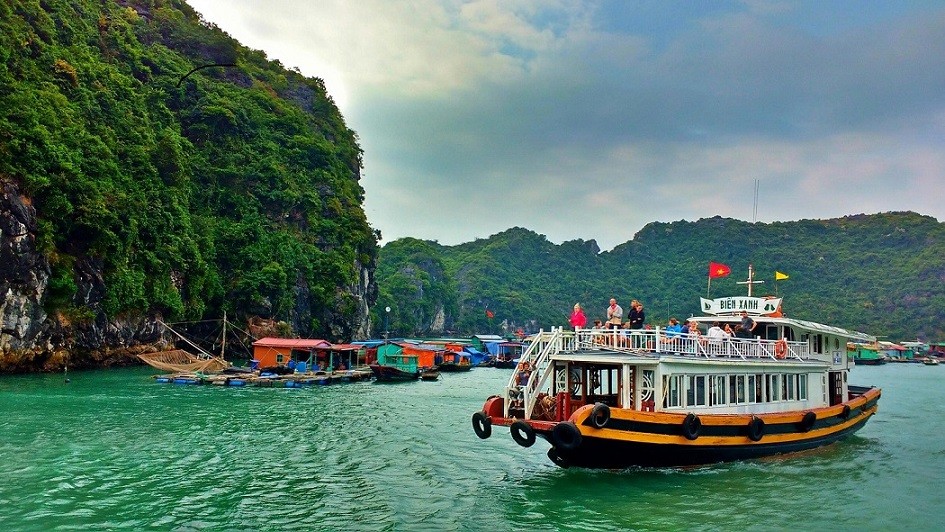
What it takes for Vietnam’s tourism to achieve global prominence: Experts
Latest
 |
| Ha Long Bay is a popular destination for foreign visitors to Vietnam. (Photo: Pexels) |
Tourism in Vietnam has experienced remarkable growth since 2022. Last year, international tourist arrivals reached an impressive 12.6 million, a 3.5-fold year-on-year increase, surpassing the original target of 8 million.
Most recently, Vietnam welcomed more than 4.6 million foreign tourist arrivals in the first quarter of 2024, up 72% year-on-year and 3.2% higher than the pre-pandemic 2019 figure.
According to RMIT Senior Program Manager for Tourism and Hospitality Management Dr Jackie Ong, “Vietnam’s goal of welcoming 17-18 million foreign tourist arrivals in 2024 seems highly feasible with sustained efforts, diversification, and accessible visa policies.”
She stressed, “To ensure growth beyond 2024, it is crucial to recognise tourism as an integrated economic sector. Collaborative efforts among relevant authorities, communities, and tourism-related businesses are pivotal to portraying an enticing image of Vietnam.”
Dr Ong observed that recent marketing strategies, product orientation, and open visa policies have effectively complemented the rich natural and cultural resources that Vietnam has to offer, with tourism products now extending to river tourism, gastronomy tourism, rural tourism, wellness tourism, and festival tourism.
Meetings, Incentives, Conferences, and Exhibitions (MICE) tourism is also gaining traction thanks to Vietnam's increasing popularity as a business and leisure destination, RMIT Associate Program Manager for Tourism and Hospitality Management Dr Justin Matthew Pang pointed out.
Vietnam's MICE industry is estimated to be at a compound annual growth rate of 5% for the next five years. This is positive news as MICE tourism can provide significant economic stimulation by attracting business travellers who spend on local accommodation, dining, and leisure activities. It also promotes destination visibility, often resulting in repeat visits.
“While Vietnam's MICE market has been dominated by travellers from China, South Korea, and Japan, looking further afield, Vietnam should aim to become a MICE venue of choice for South Asian countries like India, Pakistan and Sri Lanka. These countries currently have a strong market growth, coupled with high aspirations to do well economically,” Dr Pang said.
Vietnam also stands to benefit from targeting niche markets with high spending powers, such as the super-wealthy from India who choose Vietnam for their destination weddings.
This past year, Vietnam has hosted extravagant Indian weddings in Ha Long, Da Nang, and Phu Quoc.
RMIT Lecturer Dr Daisy Kanagasapapathy said that “with its stunning natural beauty, warm hospitality, and world-class hotels, Vietnam is slowly gaining attention to become a go-to destination for ultra-high-net-worth couples looking to tie the knot uniquely and memorably.”
She said that weddings inject significant revenue into local economies through expenditures on venues, accommodation, catering, and entertainment, all while fostering cross-cultural understanding by showcasing traditional customs and ceremonies.
Perhaps the most discussed boost to inbound tourism in the past year has been Vietnam’s new visa policy.
Previously, the country only issued 30-day single-entry electronic visas to citizens from 80 countries. Since 15 August 2023, e-visas can be granted to citizens of all countries for multiple entries within 90 days.
RMIT Senior Lecturer Dr Nuno F. Ribeiro advocates for expanding visa exemption as the next essential step. With neighbouring countries like Thailand and Malaysia relaxing their visa requirements, Vietnam can benefit by following suit and attracting tourists who visit multiple Southeast Asian countries.
“Vietnam should consider waiving visas for countries with a higher level of development, large tourism spending, and potential for long-term stays. This includes countries such as Australia, Canada, the US, and the remaining countries of the European Union,” Dr Ribeiro said.
“The clock is ticking, and if Vietnam delays in expanding its visa exemption policies, it risks losing out on attracting tourists from major tourism markets,” he added.
 |
| RMIT Senior Program Manager for Tourism and Hospitality Management Dr Jackie Ong. (Photo: Ngoc Minh) |
Dr Jackie Ong proposed several other strategies that Vietnam's tourism industry could consider:
Diversifying attractions: The industry can develop and promote a diverse range of tourist attractions beyond mainstream destinations, showcasing the country's cultural, natural, and historical richness.
Infrastructure improvement: Improvements in airport and public transport infrastructure are needed, and Vietnam should consider transportation hubs as a strategy for tourism growth. For instance, the efficiency and integration of train stations in Japan, the UK, France and Singapore are drivers to attract tourists.
Sustainable tourism: Emphasising sustainable and responsible tourism practices becomes paramount to preserving the environment and local culture. Improving waste management systems and providing training support for rural community-based tourism initiatives are critical.
Quality services: Although numbers are a measurement of economic success, over-emphasis on numbers could result in negative impacts on the natural environment, society and culture. Ensuring high-quality services and hospitality are important to create positive experiences, especially in the high-end tourism sector. Moreover, developing human resources in the hospitality sector and promoting tourism and hospitality education is crucial.
Digital marketing: Utilising digital platforms for effective marketing is essential to reach a broader audience and adapt to changing travel trends.
Safety and security: Maintaining a safe and secure environment for tourists is crucial for encouraging first-time as well as repeat visits. A focus on managing crowds can enhance the overall tourist experience.
Dr Ong said, “Vietnam's tourism industry is on a trajectory of sustainable growth. By implementing strategic measures and prioritising quality over quantity, the country can solidify its position as a leading global destination and ensure the long-term success of its tourism sector.”

















